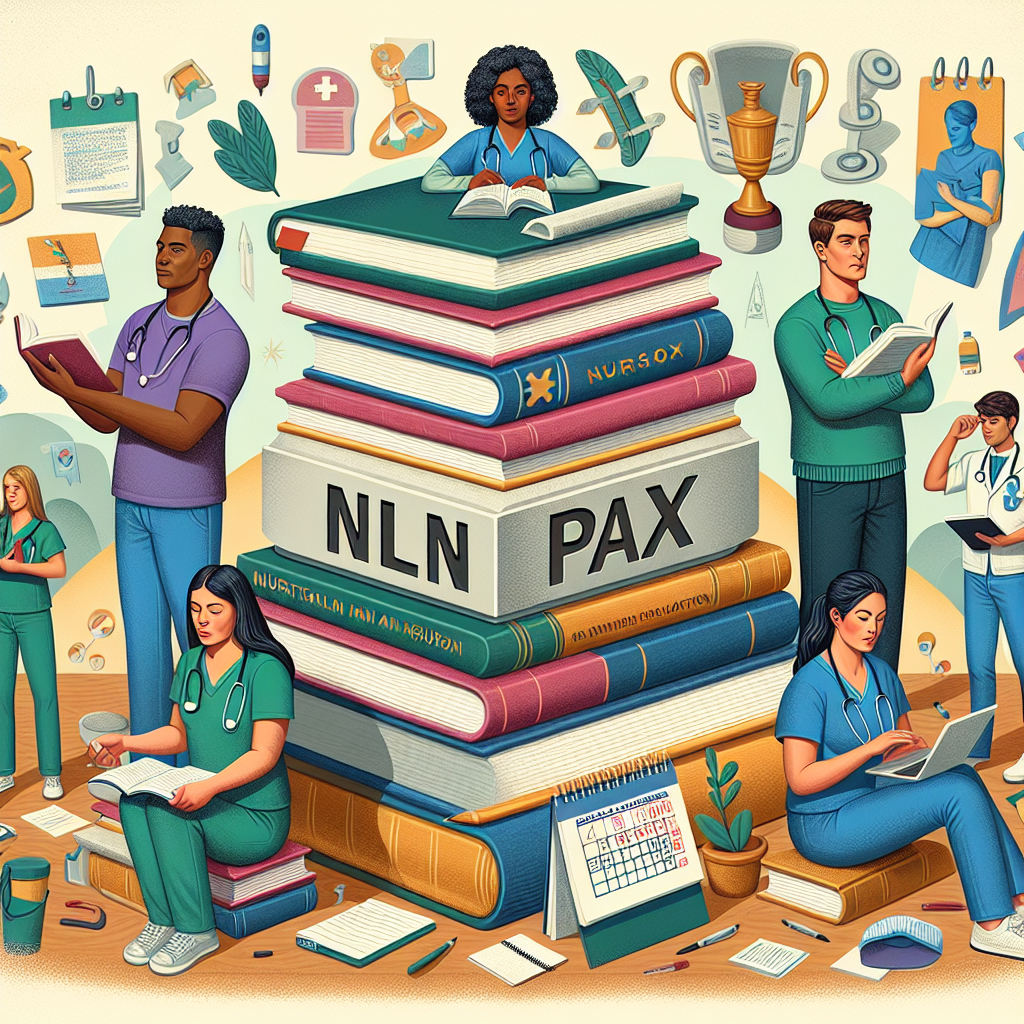The National League for Nursing Pre-Admission Exam (NLN PAX) is a standardized test designed to evaluate the academic abilities of prospective nursing students. Passing this exam on your first attempt can be a significant milestone in your journey toward a rewarding career in nursing. This article will guide you through understanding the structure of the NLN PAX exam, selecting essential study materials, crafting an effective study schedule, and implementing test-taking strategies for exam day success. By following these guidelines, you can increase your chances of acing the exam and moving one step closer to your professional goals.
Understanding the NLN PAX Exam Structure
The NLN PAX exam is a comprehensive assessment that evaluates the knowledge and skills necessary for success in a nursing program. It comprises three main sections: Verbal Ability, Mathematics, and Science. The Verbal Ability section tests your reading comprehension and vocabulary skills, while the Mathematics section assesses your understanding of basic mathematical concepts, including algebra and geometry. The Science section covers a range of topics such as biology, chemistry, and physics. Familiarizing yourself with the structure of the exam will help you identify which areas require more focus during your study sessions.
Each section of the NLN PAX exam is timed, with the entire test lasting approximately three hours. It’s crucial to understand the time constraints and practice pacing yourself to ensure you can complete each section within the allotted time. Additionally, the exam consists of multiple-choice questions, and it’s important to know that there is no penalty for guessing. This means that you should attempt to answer every question, even if you’re unsure of the correct answer.
To gain a comprehensive understanding of the exam’s format, consider taking practice tests and reviewing sample questions. These resources can provide insight into the types of questions you may encounter and help you become more comfortable with the exam’s structure. For more information on the NLN PAX exam, including sample questions and practice tests, visit nlnpax.com.
Essential Study Materials and Resources
Selecting the right study materials is a critical step in preparing for the NLN PAX exam. Begin by gathering textbooks and review guides that cover the key subjects tested on the exam: Verbal Ability, Mathematics, and Science. Look for resources that provide detailed explanations and practice questions to reinforce your understanding of the material. Additionally, consider using online resources, such as instructional videos and interactive quizzes, to supplement your study routine.
One of the most valuable resources for exam preparation is practice tests. These tests simulate the actual exam experience, allowing you to assess your strengths and weaknesses and adjust your study plan accordingly. Practice tests also help you become familiar with the exam’s time constraints and question formats, reducing anxiety on test day. Many online platforms offer free or paid practice tests, including nlnpax.com, which can be a valuable tool in your preparation arsenal.
In addition to traditional study materials, consider joining study groups or online forums where you can connect with other prospective nursing students. These communities provide opportunities to discuss challenging topics, share study tips, and gain insights from peers who are also preparing for the NLN PAX exam. Engaging with a supportive network can boost your confidence and motivation as you work toward passing the exam on your first attempt.
Crafting an Effective Study Schedule
Creating a structured study schedule is essential for effective exam preparation. Begin by assessing your current knowledge and identifying the areas where you need the most improvement. Allocate more time to study these subjects while maintaining a balanced approach to ensure you cover all sections of the exam. Set specific goals for each study session, such as mastering a particular topic or completing a set number of practice questions.
When crafting your study schedule, consider your personal learning style and daily commitments. Some individuals may benefit from shorter, more frequent study sessions, while others prefer longer, more focused study periods. Be realistic about the amount of time you can dedicate to studying each day and ensure you incorporate breaks to prevent burnout. Consistency is key, so aim to study regularly and avoid cramming sessions right before the exam.
Regularly assess your progress and adjust your study schedule as needed. If you find certain topics challenging, allocate additional time to review them and seek out supplementary resources or support from study groups. Tracking your progress will help you stay motivated and ensure you’re adequately prepared for the NLN PAX exam. For more tips on creating an effective study schedule, visit nlnpax.com.
Test-Taking Strategies for Exam Day Success
Achieving success on exam day requires more than just academic preparation; it also involves strategic test-taking techniques. Start by ensuring you have a good night’s rest before the exam to ensure you’re mentally alert and focused. On the day of the exam, have a healthy breakfast and arrive at the testing center early to allow yourself time to relax and settle in.
During the exam, read each question carefully and manage your time effectively. Since the NLN PAX exam is timed, it’s important to pace yourself and avoid spending too much time on any single question. If you’re unsure of an answer, make an educated guess and move on; remember, there is no penalty for guessing, so it’s to your advantage to answer every question.
Finally, maintain a positive mindset throughout the exam. Confidence can significantly impact your performance, so remind yourself of the preparation and effort you’ve invested in reaching this point. Employ relaxation techniques, such as deep breathing, to manage any anxiety that may arise during the test. By staying calm and focused, you can maximize your chances of passing the NLN PAX exam on your first attempt. For additional test-taking strategies, explore resources available at nlnpax.com.
Successfully passing the NLN PAX exam on your first attempt requires a combination of understanding the exam structure, utilizing essential study materials, creating an effective study schedule, and applying strategic test-taking techniques. By dedicating time and effort to each of these areas, you can enhance your readiness and confidence as you approach the exam. Remember, preparation is the key to success, and with the right resources and mindset, you can achieve your goal of becoming a nursing professional. For further guidance and support, visit nlnpax.com and take the next step toward your nursing career.





